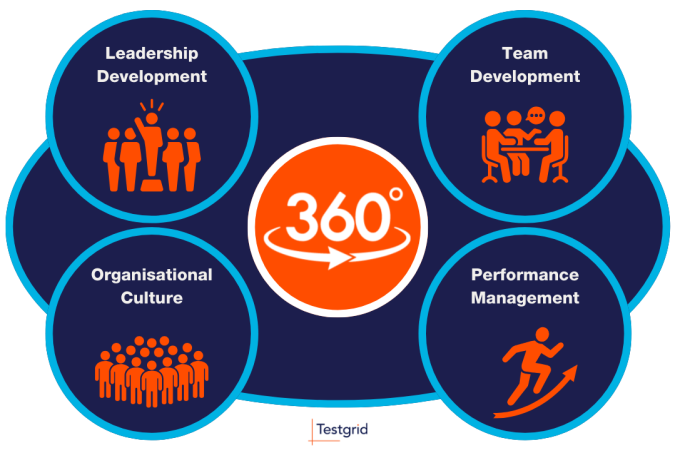Unlocking the Potential of 360 Assessments: WHERE and WHEN they are most effective
In recent years, 360-degree assessments have begun increasing in popularity as potent tools for evaluating performance, assessing potential, and fostering organisational growth. Despite their historical use, organisations often grapple with the challenge of determining the optimal contexts for deploying 360 assessments. With various factors to consider, such as timing, the current state of an organisations culture and strategic objectives, knowing WHEN and WHERE you should introduce 360 assessments is something that can make this tool seem daunting to implement well.
By exploring the application of these tools in various contexts, we aim to provide clarity and guidance to organisations seeking to capitalise on their potential. We’ll outline the common use cases of 360 assessments, ranging from leadership development to performance management and team dynamics assessment. Additionally, we’ll offer insights into best practices for implementing 360 assessments. Join us as we unpack the intricacies of using 360 assessments and explore how you can ensure you effectively make use of their transformative potential.
UNDERSTANDING 360 ASSESSMENTS
In essence, a 360 assessment serves as a comprehensive feedback mechanism that gathers insights on an individual’s performance from various stakeholders within an organisation, including supervisors, peers, direct reports, and sometimes even customers. Unlike traditional review systems, which typically rely on a single evaluator, the 360 assessment offers a holistic view by encompassing diverse perspectives. Through this multi-rater feedback, the assessment evaluates a wide range of competencies, such as communication skills, teamwork, leadership qualities, and problem-solving abilities. For a more information about the details of a 360 assessment, check out our full blog post on 360 and performance.
These assessments are rooted in the principle that feedback from multiple perspectives provides a more accurate and comprehensive view of an individual’s performance. By gathering insights from colleagues at different levels and roles within the organisation, 360 assessments capture a broader spectrum of perspectives, enhancing the validity and reliability of the feedback.
WHERE YOU SHOULD IMPLEMENT 360 ASSESSMENTS
Leadership Development
Performance Management
Team Development
Organisational Culture
WHEN SHOULD YOU USE 360 ASSESSMENTS?
CONCLUSION
BUILD YOUR OWN CUSTOM 360°
Get in Touch

